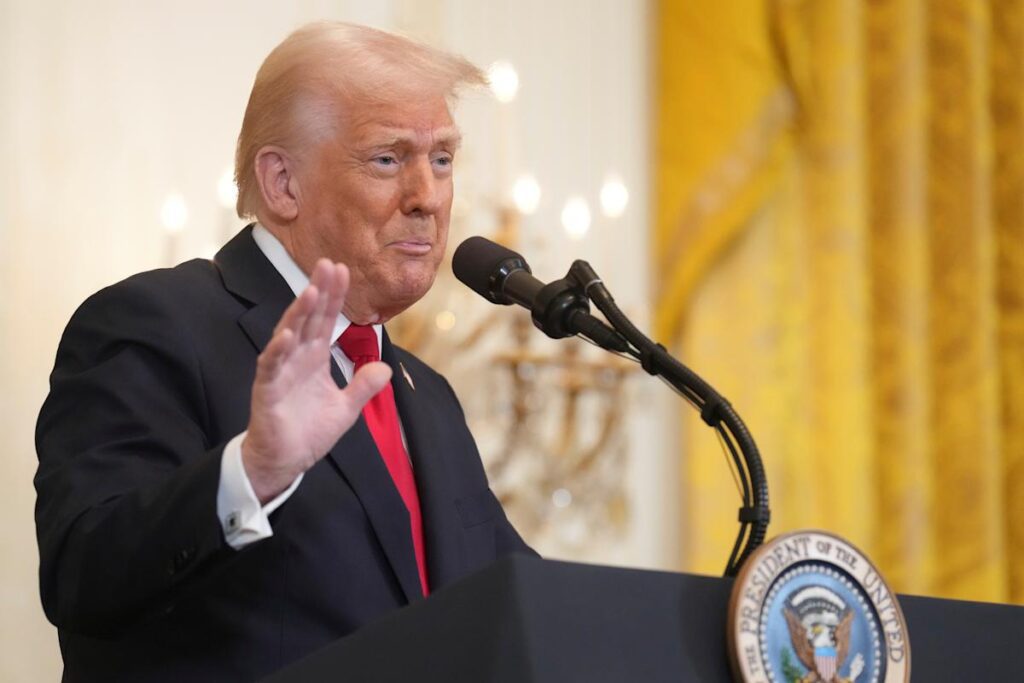Big Tech’s Ambitious AI Plans Face Hurdles from Tariffs
In an era where artificial intelligence is revolutionizing the tech landscape, Big Tech is gearing up to invest a staggering sum — hundreds of billions of dollars — this year alone. Much of this funding will go towards building massive data centers, essential for powering AI technologies. However, the ongoing tariffs implemented by former President Trump could significantly strain these ambitious plans, as they threaten to elevate construction costs and impact equipment pricing.
The Cost of Construction Equipment and Materials
According to real estate firm CBRE, Trump’s tariffs are expected to increase construction expenses for commercial projects by 3% to 5%. The main culprits? Steel, aluminum, and copper, which are integral components in data center infrastructure, from their structural frameworks to electrical systems and cooling methods.
Matt Pearl, director of strategic technologies at the Center for Strategic and International Studies (CSIS), illustrated the potential ramifications, stating, "As Big Tech companies strive to expand their AI data centers, these tariffs will impact their capacity to realize those objectives."
An Industry on the Move
Amazon, Microsoft, Google, and Meta, often referred to as hyperscalers, are racing to bolster their infrastructure for AI. They are projected to collectively invest about $325 billion by 2025. Yet, these plans may be jeopardized by Trump’s broader tariff policies, which include a 20% duty on imports from China alongside upcoming 25% tariffs on goods from Canada and Mexico.
This strategy not only complicates matters for companies importing equipment but raises questions about the future of tech manufacturing in various countries, especially as Trump hints at possible import taxes on semiconductors made internationally.
A Tight Supply Chain
As the demand for data center equipment escalates, the supply chain has been under immense pressure for years. In 2024 alone, the U.S. imported around $33 billion in computer parts from Taiwan, a vital market for components such as Nvidia’s GPUs. Moreover, computers classified under data servers amounted to $43 billion from Mexico and $34 billion from China.
These numbers underscore the reliance on international sources for critical data center equipment — posing a significant challenge if tariffs continue to widen in scope.
Electrical Components in Demand
Beyond structural materials, data centers also require a range of electrical components. As Barclays analyst Brendan Lynch pointed out, "The supply chain has been constrained for years." Electrical components such as transformers, many of which are sourced from overseas, are particularly susceptible to rising costs due to tariffs.
Despite these financial hurdles, the relentless push for AI development may motivate data center operators to absorb these increased expenses rather than halt progress. "They will definitely spend more," Lynch noted, adding that tariffs would ultimately influence profitability for developers and hyperscalers.
Conclusion
The complex landscape of tariffs and their impact on Big Tech’s AI ambitions raises important questions about the future of the industry. As companies navigate these challenges, the overarching goal remains clear: harnessing AI’s full potential requires significant investment and infrastructure.
If you’re intrigued by the interplay between technology and economics, stay tuned. The AI Buzz Hub team is excited to see where these breakthroughs take us. Want to stay in the loop on all things AI? Subscribe to our newsletter or share this article with your fellow enthusiasts.




